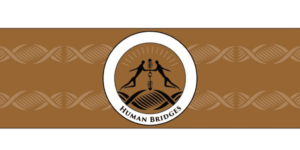Punishment And Purpose ~ References
No Comments yet Ajzen, I. (1988). Attitudes, personality and behavior. Milton Keynes: Open University Press.
Ajzen, I. (1988). Attitudes, personality and behavior. Milton Keynes: Open University Press.
Allport, G. W. (1935). Attitudes. In C. Murchison (Ed.), A handbook of social psychology (pp. 798–844). Worcester: Clark University Press.
Ashworth, A. (1992a). Deterrence. In A. von Hirsch & A. Ashworth (Eds.), Principled sentencing (pp. 53–61). Edinburgh: Edinburgh University Press.
Ashworth, A. (1992b). Sentencing and criminal justice. London: Weidenfeld and Nicolson.
Bakker, I. (1996). Strafdoelen van rechters en Officieren van Justitie. Leiden: NISCALE.
Bazemore, G., & Feder, L. (1997). Judges in the punitive juvenile court: Organizational, career and ideological influences on sanctioning orientation. Justice Quarterly, 14, 87–114.
Bazemore, G., & Maloney, D. (1994). Rehabilitating community service: Toward restorative service sanctions in a balanced justice system. Federal Probation, 58, 24–35.
Beccaria, C. (1995). On crimes and punishments. In R. Bellamy (Ed.), On crimes and punishments and other writings. Cambridge: Cambridge University Press.
Bentham, J. (1982). An introduction to the principles and morals of legislation. London: Menhuen & Co.
Bentler, P. M. (1986). Structural modelling and psychometrika: A historical perspective on growth and achievements. Psychometrica, 51, 35–51.
Bentler, P. M. (1990). Comparative fit indexes in structural models. Psychological bulletin, 107, 238–246.
Bentler, P. M. (1992). EQS: Structural equations program manual. Los Angeles: BMDP Statistical Software.
Berger-Wiegerinck, M. F. M., Dooren-Berger, E. M. J., Nieuwenhuizen, W. A. P., Lever, A. B., de Vree, A. P., & Meijer, G. H. (Eds.). (1997). Gids voor de rechterlijke macht en het rechtswezen in het Koninkrijk der Nederlanden. Deventer: Noorduin.
Berghuis, A. C. (1992a). De harde en de zachte hand: Een statistische analyse van verschillen in sanctiebeleid. Trema, 84–93.
Berghuis, A. C. (1992b). Preventie. In C. Bouw, H. van de Bunt, & H. Franke (Eds.), Kernbegrippen in de criminologie (pp. 73–76). Arnhem: Gouda Quint.
Beyleveld, D. (1980). A bibliography on general deterrence research. Westmead: Saxon House.
Bianchi, H. (1986). Abolition: Assensus and sanctuary. In H. Bianchi & R. van Swaaningen (Eds.), Abolitionism: Towards a non-repressive approach to crime (pp. 113–126). Amsterdam: Free University Press.
Bianchi, H., & van Swaaningen, R. (Eds.). (1986). Abolitionism: Towards a nonrepressive approach to crime. Amsterdam: Free University Press.
Blad, J. R. (1997). De theoretische betekenis van het gelijkheidsbeginsel voor het strafrecht. In J. R. Blad & P. A. M. Mevis (Eds.), Het gelijkheidsbeginsel: Pretentie en werkelijkheid (pp. 27–39). Deventer: Gouda Quint.
Blumstein, A., Cohen, J., Martin, S. E., & Tonry, M. H. (1983). Research on sentencing: The search for reform. (Vol. 1). Washington: National Academy Press. 182 References
Blumstein, A., Cohen, J., & Nagin, D. (Eds.). (1978). Deterrence and incapacitation: Estimating effects of criminal sanctions on crime rates. Washington DC: National Academy of Sciences.
Bollen, K. A. (1989). Structural equations with latent variables. New York: Wiley.
Bollen, K. A. (1990). Overall fit in covariance structure models: Two types of sample size effects. Psychological Bulletin, 107, 256–259.
Bond, R. A., & Lemon, N. F. (1981). Training, experience, and magistrates’ sentencing philosophies. Law and Human Behavior, 5, 123–139.
Boutellier, H., van Swaaningen, R., Lippens, R., van de Bunt, H. G., & Huisman, W. (1996). Vier visies op Braithwaite. Tijdschrift voor Criminologie, 38, 360-381.
Braithwaite, J. (1989). Crime shaming and reintegration. Cambridge: Cambridge University Press.
Braithwaite, J. (1999). Restorative justice: Assessing an inmodest theory and a pessimistic theory. In M. Tonry (Ed.), Crime and justice: An annual review of research (Vol. 25, ). Chicago: University of Chicago Press.
Braithwaite, J., & Pettit, P. (1990). Not just deserts: A republican theory of criminal justice. Oxford: Oxford University Press.
Brodsky, L. S., & Smitterman, H. O. (1983). Handbook of scales from research in crime and delinquency. New York: Plenum Press.
Bruinsma, G. J. N., & Grinsven, V. L. H. M. (1990). Een reconstructie van besluitvorming: De procesmethode geïllustreerd aan straftoemetingsbeslissingen van de politierechter. Beleidswetenschap, 2, 131–148.
Bryant, F. B., & Yarnold, P. R. (1995). Principal-components analysis and exploratory and confirmatory factor analysis. In L. G. Grimm & P. R. Yarnold (Eds.), Reading and understanding multivariate statistics (pp. 99–136). Washington: American Psychological Association.
Burgess, A. (1972). A clockwork orange. London: Penguin.
Buruma, Y. (1994). Victimalisering van het strafrecht. In M. Moerings (Ed.), Hoe punitief is Nederland (pp. 211–233). Arnhem: Gouda Quint.
Byrne, L. M. (1990). The future of intensive supervision and the new intermediate sanctions. Crime and Delinquency, 36, 6–41.
Carroll, J. S., Perkowitz, W. T., Lurigio, A. J., & Weaver, F. M. (1987). Sentencing goals, causal attributions, ideology, and personality. Journal of Personality and Social Psychology, 52, 107–118.
Cavadino, M., & Dignan, J. (1997a). The penal system: An introduction. (second ed.). London: Sage.
Cavadino, M., & Dignan, J. (1997b). Reparation, retribution and rights. International Review of Victimology, 4, 233–253.
Centraal Bureau voor de Statistiek. (1998). Statistisch jaarboek 1998. Den Haag: SDU.
Chorus, J. M. J., Gerver, P. H. M., Hondius, E. H., & Koekkoek, A. K. (Eds.). (1999). Introduction to Dutch law (third ed.). The Hague: Kluwer Law International.
Christie, N. (1977). Conflicts as property. The British Journal of Criminology, 1, 1–15.
Christie, N. (1981). Limits to pain. Oxford: Martin Robertson & Company.
Clancy, K., Bartolomeo, J., Richardson, D., & Wellford, C. (1981). Sentence decisionmaking: The logic of sentence decisions and sources of sentence disparity. Journal of Criminal Law and Criminology, 72, 524–554.
Clear, T. R. (1996). The punitive paradox: Desert and the compulsion to punish. Journal of Research in Crime and Delinquency, 33, 94–108. References 183
Corstens, G. J. M. (1995). Het Nederlands strafprocesrecht. (second ed.). Arnhem: Gouda Quint.
Corstens, G. J. M. (1998). Eenheid van rechtspraak: In het bijzonder in de strafrechtspleging. Nederlands juristenblad, 7, 297–302.
Corstens, G. J. M. (1999). De alleensprekende rechter. Nederlands juristenblad, 9, 392–393.
Council of Europe. (1993). Consistency in sentencing (Recommendation No. R(92) 17). Straatsburg.
Davis, G. (1992). Making amends: Mediation and reparation in criminal justice. London: Routledge.
De Groot-van Leeuwen, L. E. (1991). De rechterlijke macht in Nederland: Samenstelling en denkbeelden van de zittende en staande magistratuur. Arnhem: Gouda Quint.
De Haan, W. (1990). The politics of redress: Crime, punishment and penal abolition. London: Unwin Hyman.
De Hullu, J., Koopmans, I. M., & De Roos, T. A. (1999). Het wettelijk strafmaximum: Een onderzoek naar het patroon van strafmaxima in het commune en bijzondere het strafrecht. (Vol. 24). Deventer: Gouda Quint.
De Jong, D.H. (2000). Het maatschappelijke raakvlak van het sanctiestelsel. Delikt en Delinkwent, 30, 583-592.
De Keijser, J. W. (1996a). Enkele kanttekeningen bij theorie en praktijk van taakstraffen. Proces, 165–167.
De Keijser, J. W. (1996b). Functies van straf in een humaan strafrechtsysteem. Proces, 127–129.
De Keijser, J. W. (1998). Het meten van attitudes ten aanzien van straf: Theorie, praktijk en toepassingen. Gedrag en Organisatie, 11, 15–24.
De Keijser, J. W. (1999). Psychologische aspecten van straftoemeting: De witte plek van Snel en de juiste strafmaat van Verwoerd. Tijdschrift voor Criminologie, 41, 186–189.
De Keijser, J.W. (2000). Punishment and Purpose: From Moral Theory to Punishment in Action. Dissertation, Leiden University, The Netherlands (Amsterdam: Thela Thesis).
De Vries, N. K. (1988). Het meten van attitudes en het voorspellen van gedrag. In R. W. Meertens & J. v. Grunbkow (Eds.), Sociale psychologie (pp. 129–148). Groningen: Wolters Noordhoff.
Denkers, F. A. C. M. (1975). Criminologie en beleid: De invloed van penologische research op het strafrechtelijke beleid. Nijmegen: Dekker & van de Vegt.
Department of Justice. (2000). Sancties in Perspectief: Beleidsnota inzake de heroriëntatie op de toepassing van vrijheidsstraffen en vrijheidsbeperkende straffen bij volwassenen. Den Haag: Sdu.
Dienst Rechtspleging van het Ministerie van Justitie. (1997). Namenlijst leden van de rechterlijke macht. ‘s-Gravenhage: Ministerie van Justitie.
Dillman, D. (1978). Mail and telephone surveys: The total design method. New York: Wiley.
Dolinko, D. (1991). Some thoughts about retributivism. Ethics, 101, 537–559.
Doorenbos, D. R. (1999). Kroniek van het straf(proces)recht. Nederlands juristenblad, 10, 435–439.
Doyle, J. F. (1995). Social philosophy of punishment: A radical critique of criminal punishment. Social Justice, 22, 7–24.184 References
Duff, A., & Garland, D. (1994). Introduction: thinking about punishment. In A. Duff & D. Garland (Eds.), A Reader on Punishment (pp. 1–43). New York: Oxford University Press.
Duff, R. A. (1996). Penal communications: Recent work in the philosophy of punishment. In M. Tonry (Ed.), Crime and justice: A review of research (Vol. 20, pp. 1–98). Chicago: University of Chicago Press.
Dunteman, G. H. (1989). Principal components analysis. Newbury Park: Sage Publications.
Enschedé, C. J. (1959). Motivering en motief. Zwolle: Tjeenk Willink.
Enschedé, C. J. (1990). Beginselen van het strafrecht. (seventh ed.). Deventer: Kluwer.
Enschedé, C. J., Moor-Smeets, H. C. M., & Swart, A. H. J. (1975). Strafvorming: Twee verslagen van het seminarium Van Hamel te Amsterdam, met een paar beschouwingen over straftoemeting. Arnhem: Gouda Quint.
Ericsson, K. A., & Simon, H. A. (1984). Protocol analysis: Verbal reports as data. London: MIT Press.
Ewart, B., & Pennington, D. C. (1987). An attributional approach to explaining sentencing disparity. In D. C. Pennington & S. Lloyd-Bostock (Eds.), The psychology of sentencing: Approaches to consistency and disparity (pp. 181–192). Oxford: Centre for Socio-Legal Studies.
Feeley, M. M., & Simon, J. (1992). The new penology: Notes on the emerging strategy of corrections and its implications. Criminology, 30, 449–474.
Feinberg, J. (1970). The expressive function of punishment. In J. Feinberg (Ed.), Doing & deserving: Essays in the theory of responsibility (pp. 55–94). Princeton: Princeton University Press.
Fiselier, J. P. S. (1985). Regionale verscheidenheid in de strafrechtspleging. Delikt en Delinkwent, 15, 283–295.
Fiselier, J. P. S., & Lensing, J. A. W. (1995). Afstemming van de straftoemeting. Trema, 105–117.
Fishbein, M. (Ed.). (1967). Readings in attitude theory and measurement. New York: John Wiley & Sons.
Fishbein, M., & Ajzen, I. (1972). Attitudes and opinions. In P. H. Mussen & M. R. Rosenzweig (Eds.), Annual review of psychology (Vol. 23, pp. 487–544). Palo Alto: Annual Reviews Inc.
Fishbein, M., & Ajzen, I. (1975). Belief, attitude, intention and behavior: An introduction to theory and research. London: Addison-Wesley.
Fitzmaurice, C., & Pease, K. (1986). The psychology of judicial sentencing. Manchester: Manchester University Press.
Foqué, R., & ‘t Hart, A. C. (1990). Instrumentaliteit en rechtsbescherming: Grondslagen van een strafrechtelijke waardendiscussie. Arnhem: Gouda Quint.
Forst, B., & Wellford, C. (1981). Punishment and sentencing: Developing sentencing guidelines empirically from principles of punishment. Rutgers Law Review, 33, 799–837.
Frijda, L. (1996). Over de persoon van de strafrechter (3). Amsterdam: Prinsengrachtreeks, Gerechtshof te Amsterdam.
Garland, D. (1990). Punishment and modern society: A study in social theory. Oxford: Clarendon Press.
Gifi, A. (1990). Nonlinear multivariate analysis. Chicester: John Wiley & Sons.
Glaser, D. (1994). What works, and why it is important: A reponse to Logan and Gaes. Justice Quarterly, 11, 711–723. References 185
Goldwin, W. (1976). Enquiry concerning political justice, and its influence on modern morals and happiness. London: Penguin.
Gottfredson, S. D., & Gottfredson, D. M. (1994). Behavioral prediction and the problem of incapacitation. Criminology, 32, 441–474.
Grapendaal, M., Groen, P. P., & Van der Heide, W. (1997). Duur en volume: Ontwikkeling van de onvoorwaardelijke vrijheidsstraf tussen 1985 en 1995; feiten en verklaringen. Den Haag: WODC.
Green, E. (1961). Judicial attitudes in sentencing: A study of the factors underlying the sentencing practice of the criminal court in Philadelphia. London: MacMillan.
Hart, H. L. A. (1963). Law, liberty and morality. Oxford: Oxford University Press.
Hart, H. L. A. (1968). Punishment and responsibility: Essays in the philosophy of law. Oxford: Clarendon Press.
Hart, H. L. A. (1982). Introduction. In J. H. Burns & H. L. A. Hart (Eds.), An introduction to the principles and morals of legislation. London: Menhuen & Co.
Hazewinkel-Suringa, D., & Remmelink, J. (1994). Inleiding tot de studie van het Nederlands strafrecht. Arnhem: Gouda Quint.
Hegel, G. W. F. (1967). Philosophy of right (T.M. Knox, Trans.). London: Oxford University Press.
Henham, R. (1988). The importance of background variables in sentencing behavior. Criminal Justice and Behavior, 15, 255–263.
Henham, R. J. (1990). Sentencing principles and magistrates’ sentencing behaviour. Aldershot: Gower Publishing Company.
Hirsch Ballin, E. M. H., & Kosto, A. (1994). Werkzame detentie: Beleidsnota voor het gevangeniswezen. Den Haag: Ministerie van Justitie.
Hoefnagels, G. P. (1980). Een eenvoudige strafzitting: Een onderzoek naar doelstellingen, verwachtingen en uitkomsten van de methode van strafrechtspraak in minder grote zaken. Alphen aan den Rijn: Samson.
Hogarth, J. (1971). Sentencing as a human process. Toronto: University of Toronto Press.
Honderich, T. (1970). Punishment: The supposed justifications. (second ed.). London: Hutchinson & Co.
Hudson, B. J. (1996). Understanding justice: An introduction to ideas, perspectives and controversies in modern penal theory. Buckingham: Open University Press.
Hulsman, L., Bernat de Celis, J., & Smits, H. (1986). Afscheid van het strafrecht: Een pleidooi voor zelfregulering. Houten: Het Wereldvenster.
Jackson, J. L., De Keijser, J. W., & Michon, J. A. (1995). A Critical look at alternatives to custody. Federal Probation, 59, 43–51.
Janse de Jonge, J. A. (1991). Om de persoon van de dader: Over strafrechttheorieen en voorlichting door de reclassering. Arnhem: Gouda Quint.
John, J. A. (1977). Experiments: Design and analysis. (second ed.). London: Charles Griffin & Company.
Jöreskog, K. G., & Sörbom, D. (1993). LISREL 8 User’s reference guide. Chicago: Scientific Software Int.
Jörg, N., & Kelk, C. (1994). Strafrecht met mate. Arnhem: Gouda Quint.
Justitiële Verkenningen. (1992). Rechterlijke straftoemeting, 18.
Justitiële Verkenningen. (1998). De computer als weegschaal van de rechter, 24.
Kannegieter, G. (1994). Ongelijkheid in de straftoemeting: De invloed van de sociale positie van de verdachte op strafrechtelijke beslissingen. Wolters-Noordhoff: Groningen.186 References
Kannegieter, G., & Strikwerda, J. (1988). Straffen op maat: Rechters en Officieren van Justitie over strafbepalende factoren en ongelijkheid in de straftoemeting in lichtere strafzaken. Groningen: Criminologisch instituut.
Kant, I. (1991). The Methaphysics of morals (M. Gregor, Trans.). Cambridge: Cambridge University Press.
Kapardis, A. (1987). Sentencing by English magistrates as a human process. In D. C. Pennington & S. Lloyd-Bostock (Eds.), The psychology of sentencing: Approaches to consistency and disparity (pp. 193–203). Oxford: Centre for Socio- Legal Studies.
Kelk, C. (1987). Strafrechtelijk stromenland, Naar eer en geweten: Liber Amicorum J. Remmelink (pp. 255–287). Arnhem: Gouda Quint.
Kelk, C. (1992). Straftoemeting, een proces van wikken en wegen. Trema, 15, 112–125.
Kelk, C. (1994a). De menselijke verantwoordelijkheid in het strafrecht. Arnhem: Gouda Quint.
Kelk, C. (1994b). Verbreding van het punitieve spectrum. In M. Moerings (Ed.), Hoe punitief is Nederland (pp. 13–29). Arnhem: Gouda Quint.
Kelk, C. (1994c). Verzelfstandiging en management. In J. Glastra van Loon, F. Denkers, C. Kelk, F. Kuitenbrouwer, T. A. d. Roos, & C. J. M. Schuyt (Eds.), Strafrecht onder vuur: De bedreigde principes van de misdaadbestrijding. Amsterdam: Balans.
Kelk, C., & Silvis, J. (1992). Vrijheid inzake straftoemeting. Justitiële Verkenningen, 8–22.
Keppel, G. (1991). Design and analysis: A researcher’s handbook. (third ed.). Englewood Cliffs: Prentice Hall.
Kim, J. O., & Meuller, C. W. (1978). Factor analysis: Statistical methods and practical issues. Newbury Park: Sage Publications.
Kim, J. O., & Mueller, C. W. (1978). Introduction to factor analysis: What it is and how to do it. Newbury Park: Sage Publications.
Kirk, R. E. (1968). Experimental design: Procedures for the behavioral sciences. Belmont: Wadsworth.
Koopmans, F. A. J. (1997). Tekst en commentaar strafvordering. In C. P. M. Cleiren & J. F. Nijboer (Eds.). Denter: Kluwer.
Kruskal, J. B., & Wish, M. (1978). Multidimensional scaling: Sage Publications.
Langemeijer, G. E. (1975). Strafrecht of -onrecht? Deventer: Kluwer.
Leemhuis-Stout, J. M. (1998). Rechtspraak bij de tijd. Den Haag.
Lemon, N., & Bond, R. (1987). Some methodological problems in sentencing research. In D. C. Pennington & S. Lloyd-Bostock (Eds.), The psychology of sentencing: Approaches to consistency and disparity (pp. 46–54). Oxford: Centre for Socio-Legal Studies.
Lensing, J. A. W. (1998). Het rapport van de commissie-Leemhuis en de straftoemeting. Delikt en Delinkwent, 28, 883–900.
Levin, M. A. (1972). Crime and punishment and social science. The Public Interest, 26, 96–103.
Levrant, S., Cullen, F. T., Fulton, B., & Wozniak, J. F. (1999). Reconsidering restorative justice: The corruption of benevolence revisited? Crime & Delinquency, 45, 3–27.
Likert, R. (1970). A technique for the measurement of attitudes. In G. F. Summers (Ed.), Attitude measurement (pp. 149–158). Chicago: Rand McNally & Company. References 187
Likert, R., & Lippitt, R. (1966). The utilization of social science. In L. Festinger & D. Katz (Eds.), Research methods in the behavioral sciences (pp. 581–646). New York: Holt, Rinehart and Winston.
Lilly, J. R., Cullen, F. T., & Ball, R. A. (1995). Criminological theory: Context and consequences. London: Sage.
Lovegrove, A. (1999). Theoretical and methodological issues in the psychological study of judicial sentencing. Psychology, Crime & Law, 5, 217–250.
Lurigio, A. J., & Petersilia, J. (1992). The emergence of intensive probation supervision programs in the United States. In J. M. Byrne, A. Lurigio, & J. Petersilia (Eds.), Smart sentencing: The emergence of intermediate sanctions (pp. 3–17). London: Sage Publications.
Mair, G. (1991). What works – nothing or everything? Measuring the effectiveness of sentences. London: HMSO.
Malsch, M., & Kleijne, G. (1995). Restorative aspects in the criminal justice system of The Netherlands (wd 95–05). Leiden: NISCALE.
Martinson, R. (1974). What works? Questions and answers about prison reform. Public Interest, 35, 22–54.
Maxwell, S. E., & Delaney, H. D. (1990). Designing experiments and analysing data: A model comparison perspective. Belmont: Wadsworth.
McGuire, W. J. (1969). The nature of attitudes and attitude change. In G. Lindzey & E. Aronson (Eds.), The handbook of social psychology (second ed., Vol. 3, pp. 136–314). Reading, MA: Addison-Wesley.
McIver, J. P., & Carmines, E. G. (1981). Unidimensional scaling. Newbury: Sage Publications.
Mears, D. P. (1998). The sociology of sentencing: Reconceptualizing decisionmaking processes and outcomes. Law & Society Review, 32, 667–724.
Messmer, H., & Otto, H.-U. (Eds.). (1991a). Restorative justice in trial: Pitfalls and potentials of victim-offender mediation – international research perspectives –. Dordrecht: Kluwer.
Messmer, H., & Otto, H.-U. (1991b). Restorative justice: Steps on the way toward a good idea. In H. Messmer & H.-U. Otto (Eds.), Restorative justice on trial: Pitfalls and potentials of victim-offender mediation – international research perspectives – (pp. 1–12). Dordrecht: Kluwer.
Mevis, P. A. M. (1997). Hoofdlijnen van het strafrechtelijk sanctiestelsel. Deventer: Tjeenk Willink.
Mevis, P. A. M. (1998). Het wettelijk kader van de taakstraffen. Sancties, 270–287.
Michon, J. A. (1995). The long and the short of the prison sentences: On the autonomous dynamics of sentencing (NISCALE TR 95–04). Leiden: Netherlands Institute for the Study of Criminality And Law Enforcement.
Michon, J. A. (1997). Over de eigen dynamiek van de straftoemeting. Tijdschrift voor Criminologie, 1, 25–41.
Miles, M. B., & Huberman, M. (1984). Qualitative data analysis: A sourcebook of new methods. Newbury Park: Sage.
Mill, J. S. (1867). Utilitarianism. (third ed.). London: Longmans, Green, Reader, and Dyer.
Moore, M. S. (1987). The moral worth of retribution. In F. Schoeman (Ed.), Responsibility, character, and the emotions: New essays in moral psychology (pp. 179–219). Cambridge: Cambridge University Press.
Morgan, D. L. (Ed.). (1993). Successful focus groups: Advancing the state of the art. London: Sage Publications.
Morris, H. (1968). Persons and punishment. The Monist, 52, 475–501. 188 References
Morris, N. (1974). The future of imprisonment. Chicago: University of Chicago Press.
Morris, N. (1992). Desert as a limiting principle. In A. von Hirsch & A. Ashworth (Eds.), Principled sentencing (pp. 201–206). Edinburgh: Edinburgh University Press.
Morris, N., & Tonry, M. (1990). Between prison and probation: Intermediate punishments in a rational sentencing system. New York: Oxford University Press.
Mullen, B. (1989). Advanced BASIC meta-analysis. Hillsdale: Lawrence Erlbaum.
Muller, N. (1908). Biografisch-aetiologisch onderzoek over recidive bij misdrijven tegen den eigendom. Utrecht: Kemink & zoon.
Muller, N. (1934). De straf in het strafrecht (Taak en schoonheid van de onvoorwaardelijke straf). Tijdschrift voor Strafrecht, 44, 15–72.
Myers, M. A., & Talarico, S. M. (1987). The social contexts of criminal sentencing. New York: Springer-Verlag.
Nagel, W. H. (1977). De funkties van de vrijheidsstraf. Alphen aan den Rijn: Samson.
Nelen, J. M., & Sabee, V. (1998). Het vermogen te ontnemen: Evaluatie van de ontnemingswetgeving – eindrapport. Den Haag: WODC.
Newell, A., & Simon, H. A. (1972). Human problem solving. Englewood Cliffs: Prentice Hall.
Nietzsche, F. (1994). On the genealogy of morality: A polemic (Carol Diethe, Trans.). Cambridge: Cambridge University Press.
Nijboer, J. F. (1999). Criminal justice system. In J. M. J. Chorus, P. H. M. Gerver, E. H. Hondius, & A. K. Koekkoek (Eds.), Introduction to Dutch Law (third ed., pp. 383–433). The Hague: Kluwer Law International.
Nozick, R. (1981). Philosophical explanations. Oxford: Clarendon Press.
Nunnally, J. C. (1981). Psychometric theory. New York: McGraw-Hill.
Ogilvy, C. S. (1972). Tomorrow’s math: Unsolved problems for the amateur. (second ed.). New York: Oxford University press.
Oostveen, A., & Grumbkow, J. v. (1988). Attitudes: Een inleiding. In R. W. Meertens & J. v. Grunbkow (Eds.), Sociale psychologie (pp. 111–128). Groningen: Wolters Noordhoff.
Ortet-Fabregat, G., & Pérez, J. (1992). An assessment of the attitudes towards crime among professionals in the criminal justice system. British Journal of Criminology, 32, 193–206.
Oskamp, E.W. (1998). Computerondersteuning bij straftoemeting: De ontwikkeling van een databank. Deventer: Gouda Quint.
Oskamp, S. (1977). Attitudes and opinions. Englewood Cliffs: Prentice-Hall.
Palmer, T. (1975). Martinson revisited. Journal of Research in Crime and Delinquency, 12, 133–152.
Palmer, T. (1983). The “effectiveness” issue today: An overview. Federal Probation, 46, 3–10.
Palys, T. S., & Divorsky, S. (1986). Explaining sentence disparity. Canadian Journal of Criminology, 28, 347–362.
Pease, K. (1987). Psychology and sentencing. In D. C. Pennington & S. Lloyd-Bostock (Eds.), The psychology of sentencing: Approaches to consistency and disparity (pp. 36–45). Oxford: Centre for Socio-Legal Studies.
Petersilia, J., & Turner, S. (1993). Intensive probation and parole, Crime and justice: A review of research (Vol. 17, pp. 281–336). Chicago: Chicago University Press. References 189
Ploeg, G. J., & Beer, A. P. G. d. (1993). De inpassing van de taakstraf. Justitiële Verkenningen, 19, 7–38.
Polak, L. (1947). De zin der vergelding: Een strafrechts-philosophisch onderzoek. (Vol. II). Amsterdam: Van Oorschot.
Pompe, W. P. J. (1930). De (zedelijke) rechtvaardiging van de straf in de rechtsorde. Tijdschrift voor Strafrecht, XL, 109–119.
Pompe, W. P. J. (1934). Hedendaagse geestelijke stromingen in verband met het Nederlandsche strafrecht. Themis, XCV, 244–260.
Pompe, W. P. J. (1943). De rechtvaardiging van de straf. In W. J. A. Duynstee & W. P. J. Pompe (Eds.), Praeadviezen over de rechtvaardiging van de straf (pp. 13–45). ‘s-Gravenhage: Ten Hagen.
Pompe, W. P. J. (1957). De mens in het strafrecht. Themis, 2, 88–109.
Pompe, W. P. J. (1959). Handboek van het Nederlansche strafrecht. (fifth ed.). Zwolle: Tjeenk Willink.
Projectteam SRM. (1997). WODC-strafrechtsmonitor: Ontwikkeling van een systeem voor periodiek dossier-onderzoek naar de achtergronden van de strafrechtspleging in Nederland. Den Haag: WODC.
Rawls, J. (1955). Two concepts of rules. Philosophical Review, LXIV, 3–32.
Rawls, J. (1971). A theory of justice. Oxford: Oxford University Press.
Robertson, D. (1998). Judicial discretion in the House of Lords. Oxford: Clarendon Press.
Rosenthal, R. (1984). Meta-analytic procedures for social research. London: Sage Publications.
Rubin, H. J., & Rubin, I. S. (1995). Qualitative interviewing: The art of hearing data. London: Sage publications.
Schuyt, C. J. M. (1985). Sturing en het recht. In M. A. P. Bovens & W. J. Witteveen (Eds.), Het schip van staat: Beschouwingen over recht, staat en sturing (pp. 113–124). Zwolle: Tjeenk Willink.
Snel, G. (1969). Sanctievorming: Een witte plek in het Nederlands criminologisch onderzoek. Tijdschrift voor Criminologie, 36, 117–125.
Sociaal Cultureel Planbureau. (1998). Sociaal en cultureel rapport 1998. Rijswijk: SCP.
Special issue Trema. (1992). Gelijkheid van straffen. , 15.
Steenstra, S. J. (1994). Onzekerheid, angst en punitiviteit. In M. Moerings (Ed.), Hoe punitief is Nederland (pp. 283–295). Arnhem: Gouda Quint.
Stevens, J. (1996). Applied multivariate statistics for the social sciences. (Third ed.). Mahwah: Lawrence Erlbaum Associates.
Sullivan, R. R. (1996). The birth of the prison: Discipline or punish? Journal of Criminal Justice, 24, 449–458.
Summers, G. F. (Ed.). (1970). Attitude measurement. Chicago: Rand McNally & Company.
Swanborn, P. G. (1987). Methoden van sociaal-wetenschappelijk onderzoek. Meppel: Boom.
Swanborn, P. G. (1988). Schaaltechnieken: Theorie en praktijk van acht eenvoudige procedures. Meppel: Boom.
‘t Hart, A. C. (1997). De meerwaarde van het strafrecht: Essays en annotaties. Den Haag: SDU.
Tabachnick, B. G., & Fidell, L. S. (1996). Using multivariate statistics. (third ed.). New York: Harper Collins. 190 References
Tacq, J. (1992). Van probleem naar analyse: De keuze van een gepaste multivariate analysetechniek bij een sociaal-wetenschappelijke probleemstelling. De Lier: Academisch Boeken Centrum.
Tak, P. J. P. (1993). Criminal jusitice systems in Europe: The Netherlands. Deventer: Kluwer Law and Taxation Publishers.
Thompson, B. (1984). Canonical correlation analysis. (Vol. 47). Beverly Hills: Sage.
Thorvaldson, S. A. (1990). Restitution and victim participation in sentencing: A comparison of two models. In B. Galaway & J. Hudson (Eds.), Criminal justice, restitution, and reconcilliation (pp. 23–36). New York: Criminal Justice Press.
Tonry, M., & Hamilton, K. (Eds.). (1995). Intermediate sanctions in overcrowded times. Boston: Northeastern University Press.
Tunick, M. (1992). Punishment: theory and practice. Los Angeles: University of California Press.
Tweede Kamer der Staten Generaal. (1998a). Voorstel van wet van de leden Van Oven en O.P.G. Vos houdende wijziging van het Wetboek van Strafvordering en de Wet overdracht tenuitvoerlegging strafvonnissen (verhoging maximale strafmaat politierechter) (Handelingen II 1998–1999, 26274). Den Haag.
Tweede Kamer der Staten Generaal. (1998b). Wijziging van het Wetboek van Strafrecht en het Wetboek van Strafvordering en enige andere wetten omtrent de straf van onbetaalde arbeid ten algemenen nutte (Handelingen II 1997–1998, 26114). Den Haag.
Valkenburg, W. E. C. A. (1998). Het concept-wetsvoorstel ‘taakstraffen’. Delikt en Delinkwent, 28, 40–52.
Van de Bunt, H. G. (1985). Officieren van Justitie: Verslag van een participerend observatieonderzoek. Zwolle: Tjeenk Willink.
Van de Geer, J. P. (1988). Analyse van kategorische gegevens. Deventer: Van Loghum Slaterus.
Van den Heuvel, G. (1987). Over de ‘juiste’ strafmaat van Verwoerd. Tijdschrift voor Criminologie, 29, 49–50.
Van der Horst, M. (1993). Het strafplafond van de politierechter. Nederlands juristenblad, 12, 401–402.
Van der Kaaden, J. J. (1977). Straftoemetingsfactoren: De rechtsgelijkheid in de straftoemeting. Justitiële Verkenningen, 2, 4–36.
Van der Kaaden, J. J., & Steenhuis, D. W. (1976). De harmonisering van de straftoemeting in discussie: Een bijdrage aan de harmonisering van het strafvorderingsbeleid in het ressort Arnhem. Den Haag: WODC.
Van der Land, R. (1970). Een enquête onder de Nederlandse rechterlijke macht. Ars Aequi, 524–532.
Van der Werff, C. (1979). Speciale preventie. ‘s-Gravenhage: Staatsuitgeverij.
Van Dijk, J. J. M., Toornvliet, L. G., & Sagel-Grande, H. I. (1995). Actuele criminologie. Lelystad: Koninklijke Vermande.
Van Duyne, P. C. (1983). Beslissen in eenvoud: Hoe Officieren van Justitie over strafzaken beslissen. Arnhem: Gouda Quint.
Van Duyne, P. C. (1987). Simple decision making. In D. C. Pennington & S. Lloyd-Bostock (Eds.), The psychology of sentencing: Approaches to consistency and disparity (pp. 143–158). Oxford: Centre for Socio-Legal Studies.
Van Duyne, P. C., & Verwoerd, J. R. A. (1985). Gelet op de persoon van de rechter: Een observatie-onderzoek naar het strafrechtelijk beslissen in de raadkamer. (Vol. 58). ‘s-Gravenhage: Staatsuitgeverij.
Van Kalmthout, A. M. (2000). Meten met gelijke maten: Een nieuw perspectief voor de straftoemeting? Justitiële Verkenningen, 26(4), 33-43. References 191
Van Koppen, P. J. (1990). The Dutch supreme court and parliament: Political decisionmaking versus non-political appointments. Law and Society Review, 24, 745–780.
Van Koppen, P. J., Hessing, D. J., & Crombag, H. F. M. (Eds.). (1997). Het hart van de zaak: Psychologie van het recht. Arnhem: Gouda Quint.
Van Ness, D. W. (1990). Restorative justice. In B. Galaway & J. Hudson (Eds.), Criminal justice, restitution, and reconcilliation (pp. 7–14). New York: Criminal Justice Press.
Van Swaaningen, R. (1992). Abolitionisme. In C. Bouw, H. v. d. Bunt, & H. Franke (Eds.), Kernbegrippen in de criminologie (pp. 11–16). Arnhem: Gouda Quint.
Van Swaaningen, R. (1999). Reclaiming critical criminology: Social justice and the European tradition. Theoretical Criminology, 3, 5–28.
Van Veen, T. W. (1949). Generale preventie. ‘s-Gravenhage: D.A. Daamen.
Vegter, P. C. (1997). Tekst en commentaar strafvordering. In C. P. M. Cleiren & J. F. Nijboer (Eds.). Denter: Kluwer.
Verwoerd, J. R. A. (1986). Op zoek naar de ‘juiste’ strafmaat. Tijdschrift voor Criminologie, 28, 111–127.
Von Hirsch, A. (1976). Doing justice: The choice of punishments. New York: Hill and Wang.
Von Hirsch, A. (1992a). Proportionality in the philosophy of punishment, Crime and justice: A review of research (Vol. 16, pp. 55–98). Chicago: Chicago University Press.
Von Hirsch, A. (1992b). Rehabilitation. In A. V. Hirsch & A. Ashworth (Eds.), Principled sentencing (pp. 1–6). Edinburgh: Edinburgh University Press.
Von Hirsch, A. (1993). Censure and sanctions. Oxford: Oxford University Press.
Vranken, J. B. M. (1978). Kritiek en methode in de rechtsvinding. Deventer: Kluwer.
Walgrave, L. (1994). Beyond Rehabilitation: In search of a constructive alternative in the judicial response to juvenile crime. European Journal on Criminal Policy and Research, 2, 57–75.
Walgrave, L. (1996). Over ‘reintegrative shaming’ en ‘restorative justice’: Een pleidooi voor klaarheid in terminologie en in theorie. Tijdschrift voor Criminologie, 4, 346–359.
Walgrave, L., & Geudens, H. (1996). The restorative proportionality of community service for juveniles. European Journal of Crime, Criminal Law and Criminal Justice, 4, 361–380.
Walker, N. (1985). Sentencing: Theory, law and practice. London: Butterworths.
Walker, N. (1991). Why punish? Oxford: Oxford University Press.
Weitekamp, E. (1992). Reparative justice: Towards a victim oriented system. European Journal on Criminal Policy and Research, 1, 71–93.
Wijn, M. (1997). Taakstraffen: Stand van zaken, praktijk en resultaten. Den Haag: Ministerie van Justitie.
Wright, M. (1991). Justice for victims and offenders. Philadelphia: Open University Press.
You May Also Like
Comments
Leave a Reply







